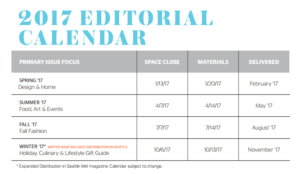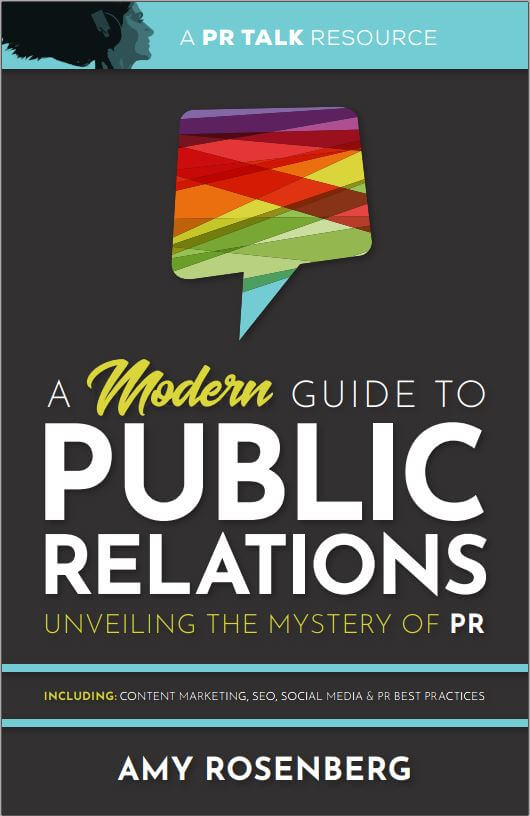With 2017 right around the corner, there couldn’t be a better time to address editorial calendars. Not the kind that map out what an organization will cover within its own blog and social media. Rather, the old school “Ed Cals” as we like to call them, which were most likely the first type of editorial calendar ever created.
The majority of magazines, trade journals, larger newspapers and many websites utilize editorial calendars to plan the topics they’ll cover within the year. They represent a window into future news, thus offering PR pros a hint into how they can garner coverage. With careful planning and the right pitch, some might consider future PR coverage a sure thing when armed with abundant editorial calendars.
Let’s examine what Ed Cals are, how to get your hands on them and how to make them work for you.
What are Ed Cals?
 Editorial calendars are a roadmap of stories that help keep the editorial teams organized. But their main function is to help the advertising department sell ads. Pairing advertisements with related editorial content creates a more seamless sales pitch. For example, if a restaurant is told that all of their competitors will be advertising within the Top Restaurants special section, it’s harder to say no. Of course that restaurant will pine after appearing next to their competitors with their own ad.
Editorial calendars are a roadmap of stories that help keep the editorial teams organized. But their main function is to help the advertising department sell ads. Pairing advertisements with related editorial content creates a more seamless sales pitch. For example, if a restaurant is told that all of their competitors will be advertising within the Top Restaurants special section, it’s harder to say no. Of course that restaurant will pine after appearing next to their competitors with their own ad.
Where can you find Ed Cals?
Since editorial calendars are so strongly utilized by advertising departments, they are typically found in each outlet’s online advertising page. Within the advertising page, the Ed Cals are often hidden within the outlet’s Media Kit — an extensive document detailing everything you could possibly ever want to know about a certain outlet, including circulation numbers, demographic information and hopefully its editorial calendar. The Media Kit’s main purpose is to drum up advertising customers.
You don’t want to buy an ad?!?
I don’t blame you with access to this golden nugget! Everyone gets that PR pros don’t want to buy an ad, but media outlets make it hard on us by hiding one of our most valuable resources in their advertising collateral. If you can’t find the Ed Cal online, simply ask the advertising contact for it. While this shouldn’t come with strings attached, prepare yourself for an advertising pitch. There’s no harm in listening, just don’t take up too much of their time. You never know what future help this advertising contact may extend, but don’t make any promises you can’t keep. You’re free to hint that you’re sorting out your budget or that you’ll pass along their info to your advertising manager.
How do you organize the Ed Cals?
Upon culling through each Ed Cal and flagging the appropriate topics, take steps to organize the mountain of information that could result. I am in love with Excel, so I input all of the opportunities into a sheet for each client. Other groups may want to use collaborative tools such as Sharepoint, Google Calendar/Sheets, or Trello.
For Veracity’s purposes, all the information about each opportunity would go into Excel, including the following:
- Media Outlet
- Coverage Topic & Details
- Deadline (you’ll have to pad the advertising deadline appropriately for editorial, we’ll get into this below)
- Issue Date (when the topic you’re pitching will run)
- Contact Name & Info (If this isn’t in the Ed Cal, leave this part blank and come back to it upon commencing more research)
- Status Report (what’s happening with each pitch, we’ll get into this below)
When do you send Ed Cal inquiries?
Sorry, your work is far from over yet. The most important part — inputting your pitch deadlines into your personal work calendar — still needs to happen. Along with inputting the deadlines into Excel, we set reminders through Google Calendar. Use whatever tool you wish for this, just don’t miss the deadline! If you are a procrastinator like me, give yourself plenty of lead time, but don’t make your deadlines so irrelevant that you ignore them completely (not proud to say that I am speaking from experience here).
While the tried and true PR professional will get to know their press targets, here is a rough outline of when to send pitches. Some trial and error will help you refine this timeline to match your press friends’ exact needs.
- National monthly magazines, like Real Simple and Martha Stewart Living: Pitch 6 – 5 months ahead.
- Trades & Verticals: Pitch 3 – 2 months ahead.
- Regional monthly magazines, like Portland Monthly: Pitch 3 – 2 months ahead.
- Weeklies: Pitch 6 – 3 weeks ahead for a special section.
- “Short lead” publications, like daily newspapers: Pitch 6 – 3 weeks ahead (even though it’s a daily, you’re erring on the side of caution for a special section).
What do you pitch?
If you’ve been working in the same industry for a time, you’ll learn what works and what doesn’t. You can also gauge what you need to pitch by reading all the info about the topic listed in the Ed Cal. But here are 3 types of pitches to send with Ed Cal inquiries:
- Offer up insight: For our methylsulfonylmethane manufacturer, Bergstrom Nutrition, we simply send a pitch asking if the press would like any insight from the company’s executives on a particular article that might fit. We then include any compelling information, like a new study or science that might align with the topic to pique their interest.
- Offer to write the article: We might ask if they’d like an article written by our client that matches the topic. We then include any qualifying information as to why our source would be considered an expert on that particular topic, along with links to past writing samples if possible. This is mainly for trades and verticals.
- Send a press release or blog post: If you happen to have a press release or blog post ready on the topic, you might as well send that along with a pitch mentioning that some or all of the information could be used in the article they’re planning. Drop a hint that you might create something special just for them.
After the pitch?
Be sure to record everything you’ve done (emails sent, messages left) and all of the communications back from press in your “status” section of the Excel. This includes any insight that might help your future pitches. No’s are just future yes’s in disguise if you pay attention to any reasoning or redirection from the press.
If we haven’t heard back from a contact, we’ll typically follow up just one more time depending on how hard up we are for news. If we’ve been getting a lot of news lately around this particular topic we may give it a rest. However, if our research is telling us that our news should most definitely be included, we’ll dig a little deeper, either by confirming that we’ve got the right contact or readjusting our pitch, if necessary.
The 2017 editorial calendars should be out already, so get a jump on your yearly planning while everyone else is busy with the holidays. Ed Cals can serve as a starting point from which the rest of your content plan emerges. Not only will you have some timely, newsworthy topics deemed valuable by the press, you could possibly reach beyond your current audience if the press picks up any of your materials. Remember that anything you send to the press can be converted into a different type of content. Media pitches can be transformed into social posts, press releases can be revised into blog posts and white papers can be converted into op-eds. So what are you waiting for?










